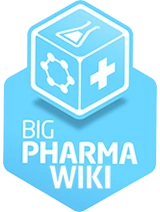Blood
| Relieves Hypertension | $110 100% |
| PRE-REQUIREMENTS: | UPGRADE WITH: | |
|---|---|---|
| 0-6 |
 |
|
| CONC. | Ioniser | |
| Treats Angina | $280 100% |
| PRE-REQUIREMENTS: | UPGRADE WITH: | |
|---|---|---|
| 9-14 |
 |
|
| CONC. | Autoclave | |
| Reduces Stroke Risk | $560 100% |
| PRE-REQUIREMENTS: | UPGRADE WITH: | |
|---|---|---|
| 14-17 |
 |
|
| CONC. | Chromatograph | |
| Combats Sickle Cell Anaemia | $960 100% |
The Blood Line allows you to relieve Hypertension, treat Angina, reduce Stroke Risk and combat Sickle Cell Anaemia
Outside the game[ | ]
Relieves Hypertension[ | ]
Hypertension (HTN or HT), also known as high blood pressure or arterial hypertension, is a chronic medical condition in which the blood pressure in the arteries is elevated.
Hypertension usually does not cause symptoms initially, but sustained hypertension over time is a major risk factor for hypertensive heart disease, coronary artery disease, stroke, aortic aneurysm, peripheral artery disease, and chronic kidney disease.
Dietary and lifestyle changes can improve blood pressure control and decrease the risk of health complications, although treatment with medication is still often necessary in people for whom lifestyle changes are not enough or not effective. The treatment of moderately high arterial blood pressure (defined as >160/100 mmHg) with medications is associated with an improved life expectancy.
Learn more on Wikipedia
Treats Angina[ | ]
Angina pectoris, commonly known as angina, is the sensation of chest pain, pressure, or squeezing, often due to ischemia of the heart muscle from obstruction or spasm of the coronary arteries.[1] While angina pectoris can derive from anemia, cardiac arrhythmias and heart failure, its main cause is coronary artery disease, an atherosclerotic process affecting the arteries feeding the heart.
Worsening ("crescendo") angina attacks, sudden-onset angina at rest, and angina lasting more than 15 minutes are symptoms of unstable angina (usually grouped with similar conditions as the acute coronary syndrome). As these may precede a heart attack, they require urgent medical attention.
Learn more on Wikipedia
Reduces Stroke Risk[ | ]
Stroke, also known as cerebrovascular accident (CVA), cerebrovascular insult (CVI), or brain attack, is when poor blood flow to the brain results in cell death. There are two main types of stroke: ischemic due to lack of blood flow and hemorrhagic due to bleeding. They result in part of the brain not functioning properly. Signs and symptoms of a stroke may include an inability to move or feel on one side of the body, problems understanding or speaking, feeling like the world is spinning, or loss of one vision to one side among others. Signs and symptoms often appear soon after the stroke has occurred.
The main risk factor for stroke is high blood pressure. Other risk factors include tobacco smoking, obesity, high blood cholesterol, diabetes mellitus, previous TIA, and atrial fibrillation among others. An ischemic stroke is typically caused by blockage of a blood vessel.[5] A hemorrhagic stroke is caused by bleeding either directly into the brain or into the space surrounding the brain.
Learn more on Wikipedia
Combats Sickle Cell Anaemia[ | ]
Sickle-cell disease (SCD), also known as sickle-cell anaemia (SCA) and drepanocytosis, is a hereditary blood disorder, characterized by an abnormality in the oxygen-carrying haemoglobin molecule in red blood cells. This leads to a propensity for the cells to assume an abnormal, rigid, sickle-like shape under certain circumstances. Sickle-cell disease is associated with a number of acute and chronic health problems, such as severe infections, attacks of severe pain ("sickle-cell crisis"), and stroke, and there is an increased risk of death.
Sickle-cell disease occurs when a person inherits two abnormal copies of the haemoglobin gene, one from each parent. Several subtypes exist, depending on the exact mutation in each haemoglobin gene. A person with a single abnormal copy does not experience symptoms and is said to have sickle-cell trait. Such people are also referred to as carriers.
The complications of sickle-cell disease can be prevented to a large extent with vaccination, preventive antibiotics, blood transfusion, and the drug hydroxyurea/hydroxycarbamide. A small proportion requires a transplant of bone marrow cells.
Almost 300,000 children are born with a form of sickle-cell disease every year, mostly in sub-Saharan Africa, but also in other parts of the world such as the West Indies and in people of African origin elsewhere in the world. In 2013 it resulted in 176,000 deaths up from 113,000 deaths in 1990.[1] The condition was first described in the medical literature by the American physician James B. Herrick in 1910, and in the 1940s and 1950s contributions by Nobel prize-winner Linus Pauling made it the first disease where the exact genetic and molecular defect was elucidated.
Learn more on Wikipedia
| Cures | |
| Cure Families | Blood • Body Response • Digestion • Infection • Liver • Lungs • Pain • Psychological • Relaxants • Sexual Health • Skin |
|---|---|
